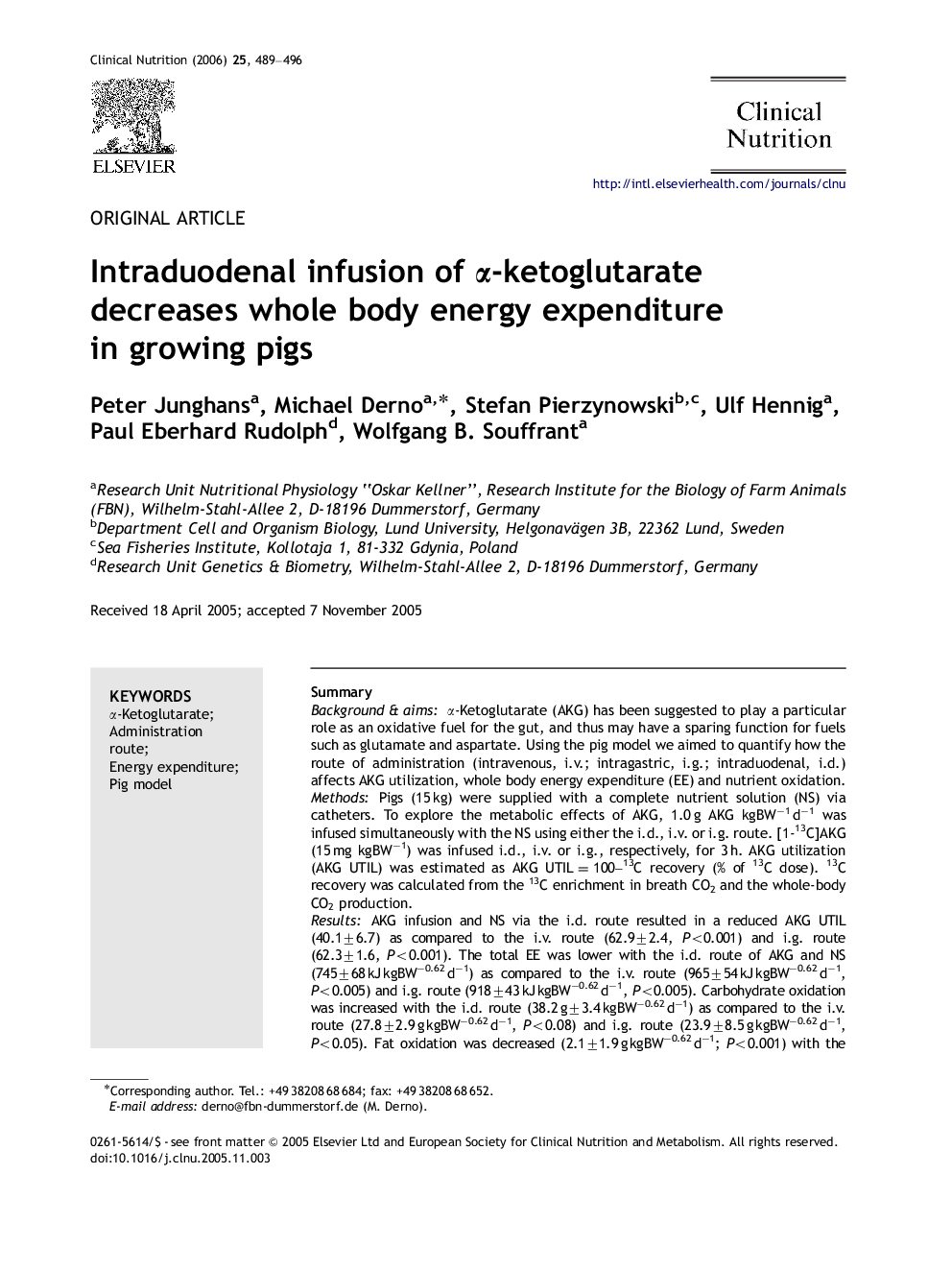| Article ID | Journal | Published Year | Pages | File Type |
|---|---|---|---|---|
| 2684550 | Clinical Nutrition | 2006 | 8 Pages |
SummaryBackground & aimsαα-Ketoglutarate (AKG) has been suggested to play a particular role as an oxidative fuel for the gut, and thus may have a sparing function for fuels such as glutamate and aspartate. Using the pig model we aimed to quantify how the route of administration (intravenous, i.v.; intragastric, i.g.; intraduodenal, i.d.) affects AKG utilization, whole body energy expenditure (EE) and nutrient oxidation.MethodsPigs (15 kg) were supplied with a complete nutrient solution (NS) via catheters. To explore the metabolic effects of AKG, 1.0 g AKG kgBW−1 d−1 was infused simultaneously with the NS using either the i.d., i.v. or i.g. route. [1-13C]AKG (15 mg kgBW−1) was infused i.d., i.v. or i.g., respectively, for 3 h. AKG utilization (AKG UTIL) was estimated as AKG UTIL=100–13C recovery (% of 13C dose). 13C recovery was calculated from the 13C enrichment in breath CO2 and the whole-body CO2 production.ResultsAKG infusion and NS via the i.d. route resulted in a reduced AKG UTIL (40.1±6.7) as compared to the i.v. route (62.9±2.4, P<0.001) and i.g. route (62.3±1.6, P<0.001). The total EE was lower with the i.d. route of AKG and NS (745±68 kJ kgBW−0.62 d−1) as compared to the i.v. route (965±54 kJ kgBW−0.62 d−1, P<0.005) and i.g. route (918±43 kJ kgBW−0.62 d−1, P<0.005). Carbohydrate oxidation was increased with the i.d. route (38.2 g±3.4 kgBW−0.62 d−1) as compared to the i.v. route (27.8±2.9 g kgBW−0.62 d−1, P<0.08) and i.g. route (23.9±8.5 g kgBW−0.62 d−1, P<0.05). Fat oxidation was decreased (2.1±1.9 g kgBW−0.62 d−1; P<0.001) with the i.d. route as compared to the i.v. route (11.5±1.4 g kgBW−0.62 d−1, P<0.001) and i.g. route (11.9±3.1 g kgBW−0.62 d−1, P<0.001).ConclusionsThe i.d. infusion of AKG in combination with the NS affected the whole body EE and nutrient oxidation, in comparison to that obtained with the i.v. and i.g. routes. It was concluded that the i.d. administration of AKG markedly controlled the nutrient partitioning in the oxidation processes. Finally, in contrary to the observations with glutamine or glutamate, a considerable percentage of the AKG infusion was retained in the body irrespective of the route of administration.
